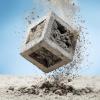
Breaking News
 WOW Canada Is UPPING ITS KILLING EFFORTS By Building SECRET DEATH DENS...
WOW Canada Is UPPING ITS KILLING EFFORTS By Building SECRET DEATH DENS...
 "This Is What They Don't Want You To Know" | Whitney Webb
"This Is What They Don't Want You To Know" | Whitney Webb
 Refueling a NUCLEAR REACTOR - Smarter Every Day 311
Refueling a NUCLEAR REACTOR - Smarter Every Day 311
 My Exclusive Interview With Benjamin Netanyahu! (You didn't see this coming)
My Exclusive Interview With Benjamin Netanyahu! (You didn't see this coming)
Top Tech News
 The 6 Best LLM Tools To Run Models Locally
The 6 Best LLM Tools To Run Models Locally
 Testing My First Sodium-Ion Solar Battery
Testing My First Sodium-Ion Solar Battery
 A man once paralyzed from the waist down now stands on his own, not with machines or wires,...
A man once paralyzed from the waist down now stands on his own, not with machines or wires,...
 Review: Thumb-sized thermal camera turns your phone into a smart tool
Review: Thumb-sized thermal camera turns your phone into a smart tool
 Army To Bring Nuclear Microreactors To Its Bases By 2028
Army To Bring Nuclear Microreactors To Its Bases By 2028
 Nissan Says It's On Track For Solid-State Batteries That Double EV Range By 2028
Nissan Says It's On Track For Solid-State Batteries That Double EV Range By 2028
 Carbon based computers that run on iron
Carbon based computers that run on iron
 Russia flies strategic cruise missile propelled by a nuclear engine
Russia flies strategic cruise missile propelled by a nuclear engine
 100% Free AC & Heat from SOLAR! Airspool Mini Split AC from Santan Solar | Unboxing & Install
100% Free AC & Heat from SOLAR! Airspool Mini Split AC from Santan Solar | Unboxing & Install
 Engineers Discovered the Spectacular Secret to Making 17x Stronger Cement
Engineers Discovered the Spectacular Secret to Making 17x Stronger Cement
Robots Over Roughnecks:

The inevitable advance of technology and automation has upended industries such as car manufacturing and food processing. Now robotics is making its way into the oil fields by helping drilling activities and putting together heavy pipes.
For companies, more automation would mean higher efficiency, safer operations, and ultimately, lower drilling and production costs. For oil rig workers, it would mean that part of the jobs lost during the oil price downturn would never return. Also, part of the new job openings would require a different type of skill set: for example, information technology and advanced computer skills.
But even if automation is expected to increase, and some day take over drilling sites and drillships, it is not the norm in the oil and gas industry today. While there have been early adopters, the oil and gas drilling business is still years away from becoming an automated activity.



